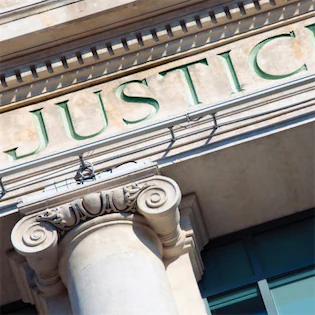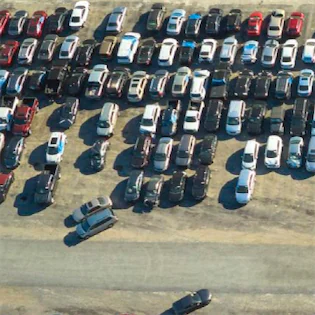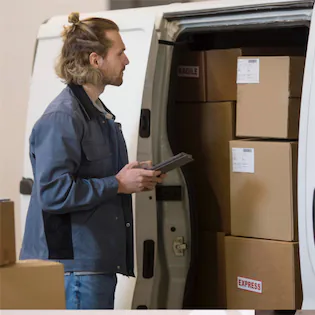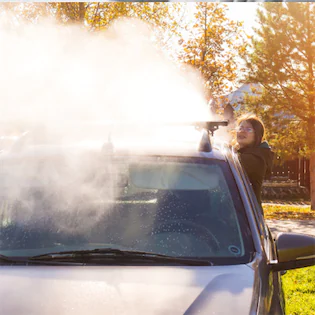The sight of a dented, bruised, or otherwise visibly damaged vehicle may tempt some drivers to continue using their cars without addressing the necessary repairs. However, the decision to drive a crashed car goes beyond aesthetic concerns; it delves into the realm of road safety, legal compliance, and potential penalties. This begs the question: why is it essential to comprehend the legal implications associated with driving a crashed car in California?
Firstly, adherence to traffic laws and regulations is fundamental to maintaining a safe and orderly road environment. A car compromised by a recent accident may pose increased risks to both the driver and others on the road. Secondly, California’s Vehicle Code outlines specific regulations regarding the condition of vehicles, and failure to comply with these standards can lead to legal consequences. Understanding the potential violations and penalties associated with driving a crashed car is vital for responsible and law-abiding motorists.
Legal Consequences of Driving a Crashed Car in California
Traffic Laws and Road Safety Regulations
1. Unsafe Operation of a Vehicle:
Driving a car with significant damage may be deemed as the unsafe operation of a vehicle, violating the fundamental principle of road safety. Such unsafe operation can endanger not only the driver but also other road users.
2. Visual Obstructions:
Extensive damage to a vehicle, especially impairing visibility by obstructing windows or lights, may lead to violations related to visual obstructions. Maintaining clear visibility is imperative for safe driving.
Potential Violations and Penalties
1. Traffic Tickets:
Law enforcement officers have the authority to issue traffic tickets for violations related to the unsafe operation of a vehicle. Traffic tickets typically come with fines, and accumulating multiple tickets can lead to increased penalties.
2. Vehicle Code Violations:
Violating specific sections of the California Vehicle Code related to the condition of vehicles can result in citations. This may include violations regarding the requirement for functional lights, mirrors, or other safety features.
3. Increased Liability in Accidents:
If the crashed car is involved in another accident due to its compromised condition, the driver may face increased liability. Insurance claims and legal actions by other parties involved in the subsequent accident can result in financial repercussions.
4. Vehicle Impoundment:
In extreme cases where the vehicle’s condition poses an imminent danger to road safety, law enforcement may choose to impound the crashed car. Vehicle impoundment comes with additional costs and inconveniences for the owner.
Further Consequences
Increased Safety Risks for the Driver and Others on the Road
1. Compromised Structural Integrity:
A crashed car may have structural damage that weakens its overall integrity. This compromises the ability of the vehicle to withstand impacts, putting occupants at a higher risk of injury in the event of a subsequent collision.
2. Malfunctioning Safety Systems:
Modern vehicles are equipped with advanced safety features such as airbags, seatbelts, and anti-lock braking systems. Damage sustained in a crash can impair the functionality of these systems, reducing their effectiveness in protecting occupants during an accident.
3. Visibility Impairment:
Structural damage, especially to windows and lights, can impede the driver’s visibility. Reduced visibility increases the likelihood of accidents, especially during low-light conditions or inclement weather.
4. Unpredictable Handling:
Damage to critical components such as the steering or suspension system can result in unpredictable vehicle handling. This unpredictability may lead to loss of control, posing a danger to the driver and others sharing the road.
Potential Exacerbation of Damages to the Vehicle
1. Mechanical Failures:
Operating a crashed car with mechanical damage, such as issues with the engine, transmission, or brakes, can lead to more severe failures. Ignoring these problems may result in costly repairs or, in extreme cases, complete vehicle breakdown.
2. Increased Repair Costs:
Delaying repairs to a crashed car often results in increased repair costs. What may have been a manageable repair immediately after the accident can escalate into a more extensive and expensive undertaking.
3. Compromised Safety Features:
Failing to address damage to safety features, such as airbags or anti-lock braking systems, can render them non-functional. In the event of another accident, the lack of these safety features can significantly increase the risk of injury.
California Vehicle Code Regulations
Relevant Sections Addressing the Condition of Vehicles
1. CVC 24002 – Unlawful to Drive Unsafe Vehicle:
This section explicitly states that it is unlawful to operate a vehicle on a public road if it is in an unsafe condition that endangers the driver or others. Driving a crashed car with visible damage may fall under this provision.
2. CVC 24601 – Tail Lamps and Reflectors:
Addressing the condition of lighting equipment, this section requires vehicles to be equipped with functional tail lamps and reflectors. A crashed car with damaged or non-functional lights may be in violation.
3. CVC 26709 – Obstructed Windshield:
This section prohibits driving a vehicle with an obstructed windshield. If the damage to the crashed car hinders visibility through the windshield, it may be deemed a violation.
4. CVC 28150 – Rearview Mirrors:
Describing the requirements for rearview mirrors, this section mandates that vehicles must have at least one mirror providing a clear view of the road behind. Damage to mirrors on a crashed car may lead to non-compliance.
Requirements for Roadworthiness and Safe Operation
1. Functional Components:
The California Vehicle Code mandates that vehicles must have all essential components, including brakes, lights, steering, and other safety features, in proper working condition.
2. Visual Inspection:
Law enforcement officers conducting routine traffic stops or inspections may visually assess the condition of a vehicle. A crashed car with obvious damage may prompt further inspection.
3. Prohibition of Unsafe Operation:
The overarching principle is that vehicles should be operated safely, without endangering the driver, passengers, or others on the road. Any condition that compromises safe operation may be subject to enforcement.
Reporting and Handling Crashed Cars in California
Obligations for Reporting Accidents
1. California Vehicle Code 20008 – Reporting Accidents:
This section of the California Vehicle Code mandates that drivers involved in a car accident resulting in injury, death, or property damage exceeding $1,000 must report the incident to the California Highway Patrol (CHP) or the local police department.
2. Timely Reporting:
Accidents must be reported promptly. Failing to report an accident within the specified time frame can result in legal consequences, including potential fines and penalties.
3. Exchange of Information:
In addition to reporting to law enforcement, drivers involved in an accident must exchange necessary information, including names, addresses, and insurance details, with the other parties involved.
Towing and Salvage Considerations for Severely Damaged Vehicles
1. Assessment of Damage:
Following an accident, conduct a thorough assessment of the damage to determine if the vehicle is safe to drive. If the damage is extensive, towing may be necessary.
2. Contacting Towing Services:
Arrange for towing services to transport the crashed vehicle to a designated location. Towing services can be contacted through law enforcement or private towing companies.
3. Salvage Title:
If the cost of repairs exceeds the vehicle’s value, it may be deemed a total loss. In such cases, the car may receive a salvage title, indicating that it has been significantly damaged.
4. Insurance Involvement:
Notify your insurance company about the accident and coordinate with them regarding the towing, salvage, and potential repairs. Insurance companies often have preferred towing partners and procedures for handling total losses.
Insurance Implications of Driving a Crashed Car in California
Impact on Insurance Coverage and Claims
1. Voided Coverage:
Continuing to drive a crashed car without addressing the damages may jeopardize insurance coverage. If the insurance company determines that the driver knowingly operated an unsafe vehicle, they may void coverage for any subsequent claims.
2. Claims Denial:
If an accident occurs while driving a crashed car, the insurance company may deny the claim if the damages are deemed to be a result of the pre-existing condition of the vehicle. This can leave the driver personally responsible for all expenses.
3. Increased Premiums:
Even if a claim is accepted, driving a damaged car can result in increased insurance premiums. Insurers may consider the driver a higher risk due to their failure to address the vehicle’s condition promptly.
4. Legal Consequences:
Driving a crashed car may lead to legal consequences, and insurance companies may be less willing to provide coverage for any resulting claims. This can leave the driver exposed to personal liability.
Responsibilities of Drivers in the Aftermath of a Crash
1. Prompt Reporting:
Report the accident to your insurance company promptly. Timely reporting is crucial for initiating the claims process and avoiding potential issues with coverage.
2. Full Disclosure:
Provide accurate and complete information about the accident to your insurance company. This includes details about the condition of your vehicle at the time of the accident.
3. Cooperation with Insurers:
Cooperate fully with the insurance company’s investigation. This may include providing statements, documentation, and any other information required to assess the claim.
4. Following Legal Obligations:
Adhere to legal obligations, including reporting the accident to law enforcement, exchanging information with other parties involved, and complying with any subsequent investigations.









